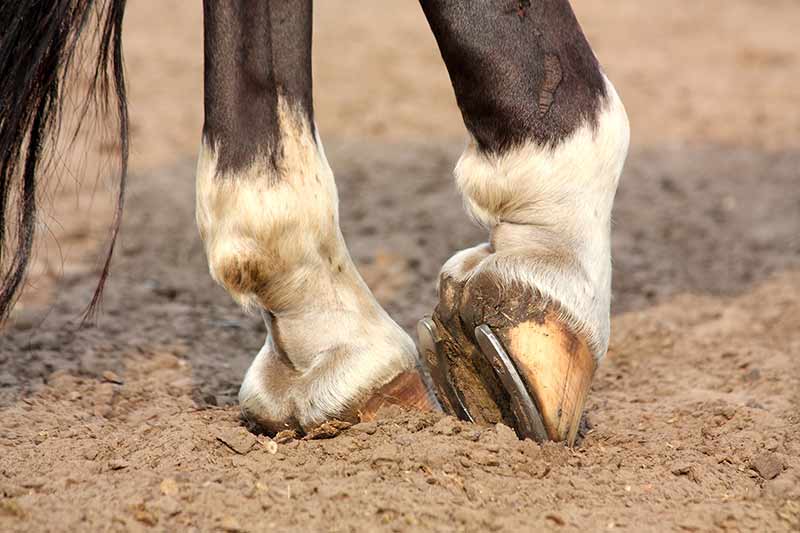
Laminitis can be a common ailment in horses as it is the inflammation of the laminae of the foot ??? which is the soft tissue structures that attach the bone of the foot to the hoof wall. This disease causes severe pain to the horse and leads to instability in the bone of the foot and in some cases, the complete separation of the bone with the hoof wall.
The horse may have to be humanely euthanized if the effects of the disease become so severe that any attempts to continue further treatment are inhumane. The horse is more susceptible to future episodes of laminitis once it has already been affected with the disease. As it cannot be cured, Petplan will take you through what you need to know about laminitis in horses???
Symptoms of laminitis
Early symptoms of laminitis are:
- Forelimbs are more common to contract laminitis than hind limbs and therefore make the horse reluctant to move and tend to rock their weight off the more badly affected forelimbs
- Affected horses will spend more time laying down than usual
- Picking up one limb will be difficult as the horse will be putting all their weight on the other affected limb/s
- Around the top of the hoof wall will often be warm to touch
As laminitis progresses, you will start to notice more severe symptoms such as:
- The hoof wall takes on a dish shape with long toes
- You will be able to notice laminitic rings on the surface of the affected area
- There will be a bulge in the sole of the hoof where the bone has rotated
- The horse will restrict its movements and place a greater amount of weight on their hind limbs

Causes of laminitis
One of the most common causes of laminitis is overfeeding ??? particularly in the spring months after rain. The ingestion of this high carbohydrate feed causes metabolic changes which can result in altered blood flow to the laminae of the foot. Other causes include:
- Retained placenta in post-foaling mares
- Obesity
- Over feeding
- Lameness that prevents weight bearing on one leg can contribute to laminitis in the other limb that is supporting the weight
- Unshod horses who are doing excess work on hard ground are susceptible to laminitis,
- Over trimming of the hoof
Preventing laminitis
As there is not treatment for laminitis, it is best to try and prevent it from happening to your horse. Some of the main ways to prevent laminitis include:
- Feeding your horse a balanced diet that is appropriate for them
- Restricted access to lush pasture in wet months
- Seek vet treatment immediately if you suspect anything may be wrong with your horse
- Ensure your horse receives regular hoof care ??? that is done by a reputable farrier
Veterinary treatment must be sought immediately if you suspect any problems with your horses hooves ??? this will usually require your vet to take x-rays of your horses feet to determine the severity of the disease.


